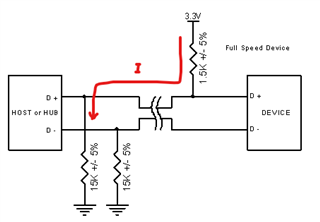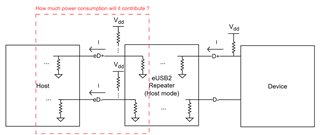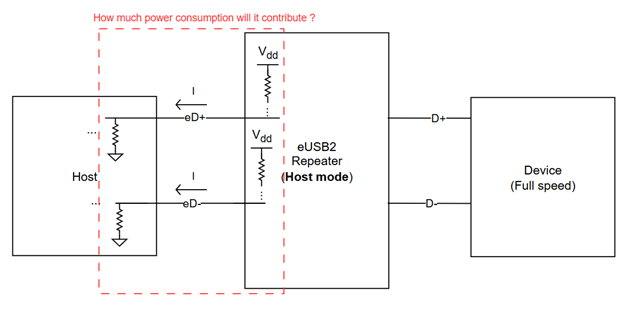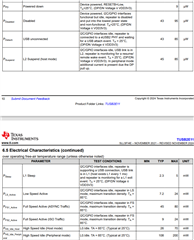Tool/software:
Hi,
We are evaluating how much additional power consumption might be incurred by using an eUSB2 repeater when the system enters the Modern Standby. (The eUSB2 state should be L1 or L2.) I saw related information in the datasheet. But I am not sure whether this value includes the contribution of the pull-up and pull-down resistors on the eUSB2 bus. Could you kindly confirm this for us? Thanks!!
For example,
The presence of both pull-up and pull-down resistor on the USB D+ line result in additional power consumption. 





